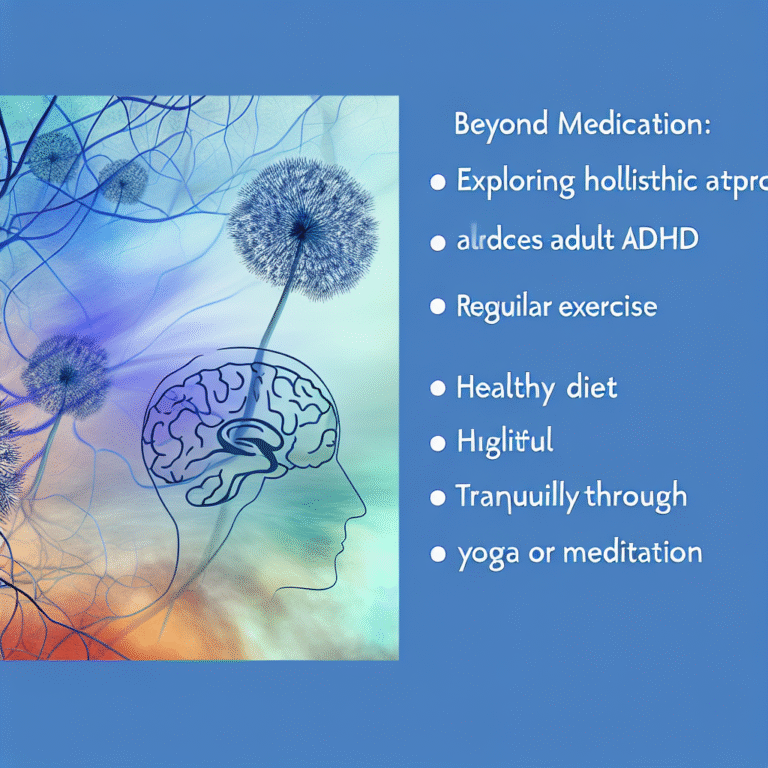
Living in the Shadows: Understanding the Hidden Symptoms of High-Functioning Depression
Introduction
Have you ever met someone who seems to have it all together, yet beneath the surface, they’re battling an invisible foe? This paradox is a hallmark of high-functioning depression, where individuals manage to fulfill their daily responsibilities while grappling with profound inner turmoil. Living in the Shadows: Understanding the Hidden Symptoms of High-Functioning Depression is crucial as it sheds light on an often overlooked condition that affects many in our society, yet remains shrouded in misunderstandings and stigma.
In this article, we will explore the subtle signs of high-functioning depression, share real-life case studies, and provide insights that can empower those affected to seek help while encouraging friends and family to offer support. Let’s embark on this journey of understanding!
What is High-Functioning Depression?
High-functioning depression is not a formal clinical diagnosis but rather a term that encapsulates individuals who experience depressive symptoms while still managing to conduct their day-to-day lives effectively. This condition often resembles typical depression but lacks some more severe indicators that might prompt others to recognize the struggle.
Characteristics of High-Functioning Depression
- Persistent Sadness: Individuals often report a baseline feeling of sadness that lingers, even on good days.
- Low Energy: Despite seemingly handling daily tasks, there is often an ongoing battle with low motivation and energy.
- Social Withdrawal: High-functioning individuals might avoid social gatherings despite maintaining a façade of being outgoing.
- Feelings of Worthlessness: Deep down, they may experience feelings of inadequacy or self-doubt, which they often hide.
- Perfectionism: Many diagnose themselves as ‘perfectionistic,’ aiming to meet high standards in their work or personal life while growing increasingly disengaged.
Understanding these characteristics is essential because they can often go unchecked, creating a cycle of struggle that remains hidden from view.
Case Study Analysis: Sarah’s Story
Sarah is a 32-year-old marketing executive who appears to be thriving in her career. She receives praise for her innovative campaigns and often is the first to volunteer for leadership roles within her company. Yet, when Sarah comes home at night, she feels an overwhelming sense of loneliness and hopelessness.
For Sarah, the symptoms of high-functioning depression manifest as excessive tiredness and irritability. Despite achieving her goals, she often questions her self-worth and feels trapped in a cycle of overworking to compensate for her internal dissatisfaction.
Analysis: Sarah’s case exemplifies how high-functioning depression often leads to a type of self-neglect. The high expectations one sets can exacerbate feelings of inadequacy and overwhelm, leading to further withdrawal and sadness.
Hidden Symptoms to Watch For
While high-functioning depression may seem disguised, there are hidden symptoms often misunderstood. Recognizing these signs can be a transformative first step in seeking help and support.
1. Numbness or Emotional Detachment
For many, high-functioning depression results in a disconnect from emotions. This might present as an inability to feel joy or excitement, even in significant life events such as weddings or promotions.
2. Overwhelming Sense of Guilt
Feelings of guilt can often plague those living in the shadows. They may feel guilty for not appreciating what they have, or for feeling depressed when “everything seems fine” on the surface.
3. Changes in Sleep Patterns
Individuals may experience insomnia or hypersomnia—either struggling to fall asleep due to racing thoughts or sleeping excessively as a form of escapism.
4. Chronic Physical Ailments
High-functioning depression can often manifest in physical symptoms. Individuals may experience frequent headaches, digestive issues, or chronic fatigue that traditional medicine cannot explain.
5. Substance Abuse
In an attempt to cope with hidden pain, some may find solace in alcohol or drugs. This often leads to serious complications and can further mask the underlying depressive symptoms.
Table: Recognizing the Symptoms of High-Functioning Depression
| Symptom | Description |
|---|---|
| Persistent Sadness | Ongoing feelings of sadness and emptiness |
| Emotional Numbness | Diminished capacity to feel positive emotions |
| Overwhelm and Disconnection | Feeling detached from loved ones or activities |
| Sleep Disturbances | Insomnia or sleeping excessively |
| Chronic Ailments | Unexplained physical symptoms, like fatigue |
| Substance Use | Reliance on alcohol or drugs for emotional escape |
The Impact of High-Functioning Depression on Daily Life
Living in the shadows of this mental health condition not only affects the individual but also extends into relationships and work environments.
Work Performance
Individuals manage to meet deadlines and maintain productivity, yet often feel a significant burden. As responsibilities increase, the pressure can exacerbate symptoms, ultimately leading to burnout.
Case Study: Tom’s Struggle at Work
Tom is a high-achieving software engineer whose work is celebrated by his team. However, behind closed doors, he battles a substantial anxiety about his performance. Despite his accomplishments, Tom feels he is never doing enough and constantly worries about his job security.
Analysis: Tom’s situation underscores how high-functioning depression can distort reality. It can create a pervasive fear of failure, leading to constant stress.
Relationships and Social Life
The social ramifications can be severe. Friends and family may misinterpret an individual’s withdrawal as aloofness or disinterest.
Case Study: Emma and Her Social Circle
Emma, a 28-year-old graphic designer, used to be the life of every party. In recent years, she has found herself canceling plans and withdrawing from her social circle. Her friends, confused by her behavior, have started to distance themselves, unaware that Emma is struggling with high-functioning depression.
Analysis: Emma’s situation illustrates how high-functioning depression can lead to social isolation. Without open communication about the struggles involved, it’s easy for relationships to falter.
Seeking Help: Breaking the Cycle
Understanding that living in the shadows doesn’t have to be a life sentence is a vital step for those experiencing high-functioning depression.
1. Professional Support
Engaging with a mental health professional is often the most effective way to combat high-functioning depression. Therapeutic modalities like cognitive behavioral therapy (CBT) can help reframe negative thoughts and develop coping strategies.
2. Building a Support System
Friends and family play a crucial role. Open discussions about mental health can foster a more supportive community where individuals feel comfortable sharing their experiences and seeking help.
3. Mindfulness and Self-Care Practices
Implementing daily mindfulness practices can alleviate symptoms significantly. Activities like journaling, meditation, or gentle exercise can bolster overall well-being and offer moments of respite in a hectic life.
4. Medication
Although some individuals may resist this route, antidepressants can provide significant relief. Consulting with a psychiatrist can help determine if this path is suitable.
5. Lifestyle Adjustments
Even small changes, such as improving sleep hygiene, incorporating balanced nutrition, or reducing screen time can create meaningful changes in daily mood and energy levels.
Conclusion
Living in the Shadows: Understanding the Hidden Symptoms of High-Functioning Depression reveals a complex tapestry of emotions and experiences that many endure silently. By acknowledging this hidden struggle, we empower ourselves and others to seek help, validate feelings of worthlessness or sadness, and ultimately break free from the constraints of high-functioning depression.
If you or someone you know resonated with any part of this journey through high-functioning depression, remember that reaching out for help is the first step toward a brighter tomorrow. Together, we can encourage an open dialogue about mental health and pave the way for healing.
FAQs
What is the difference between high-functioning depression and typical depression?
High-functioning depression is characterized by symptoms similar to typical depression, but individuals manage to perform daily tasks and maintain a façade of normalcy without seeking help.
Can high-functioning depression lead to more serious mental health issues?
Yes, if left unaddressed, high-functioning depression can escalate into more severe forms of depression or anxiety disorders.
How can I support a friend showing signs of high-functioning depression?
Engagement is key. Encourage open conversations, listen without judgment, and suggest professional help if needed.
What should I do if I suspect I have high-functioning depression?
Consult a healthcare provider or therapist who specializes in mood disorders for an accurate diagnosis and tailored treatment plan.
- Are there self-help strategies for managing high-functioning depression?
Yes, strategies like mindfulness practices, exercise, a balanced diet, and sleep hygiene can effectively manage symptoms and enhance overall well-being.
By understanding the complexities of high-functioning depression, we step out of the shadows and shine a light on the path toward healing and connection.















